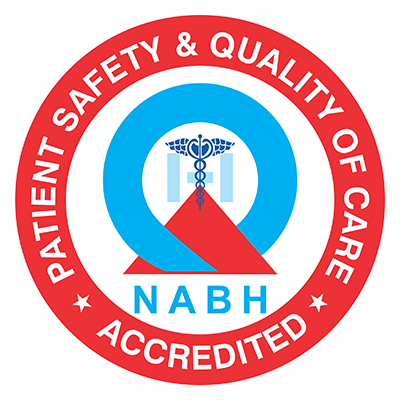Regular sports and physical activities are essential to stay fit, reduce stress, and enhance overall well-being. However, even the most seasoned athletes are not immune to injuries. Whether playing recreationally or professionally, being aware of common sports injuries and knowing how to prevent them can help you stay safe and active.
Common Sports Injuries
1. Sprains and Strains
- Sprains occur when ligaments, which are the tissues connecting bones, are stretched or torn. Commonly affected areas include the ankles, wrists, and knees.
- Strains, also known as pulled muscles, involve overstretching or tearing muscles or tendons. The hamstrings, calves, and lower back are particularly vulnerable.
2. Knee Injuries
- Knee injuries range from mild sprains to severe conditions like anterior cruciate ligament (ACL) tears. High-impact sports such as football, basketball, and skiing often lead to these injuries if not careful.
3. Shin Splints
- Manifesting as pain along the shin bone, shin splints are common among runners and athletes who engage in repetitive leg activity on hard surfaces.
4. Tennis Elbow
- Caused by repetitive wrist and arm motions, tennis elbow involves inflammation of the tendons around the elbow joint. Though the name suggests it, this condition is not limited to tennis players; it can affect anyone engaging in repetitive arm movements.
5. Shoulder Injuries
- Shoulder injuries include dislocations, sprains, and rotator cuff tears. Overhead motions in sports like swimming, volleyball, and baseball are the common risk factors.
6. Fractures
- Bone fractures are often the result of high-impact collisions or falls. They are particularly common in contact sports such as football, hockey and kabaddi.
7. Concussions
- Concussions, or traumatic brain injuries, occur due to a direct impact on the head. They are common in sports like football, boxing, cricket, hockey, and require immediate medical attention.
How to Avoid Sports Injuries
1. Warm-up and Cool Down
- A proper warm-up before starting any sports activity – or even dancing – increases blood flow to the muscles, making them more flexible and less prone to injury. Cooling down after the session helps the body transition back to a resting state and reduces muscle stiffness.
2. Proper Gear
- Use appropriate footwear, protective padding, and sport-specific equipment. Well-fitted gear reduces the risk of injury by providing adequate support and cushioning.
3. Correct Techniques
- Using improper form during can lead to overuse injuries. Consult coaches or trainers to ensure you are using the correct techniques for your sport.
4. Strength and Flexibility Training
- Strengthening muscles around vulnerable joints can provide added support and stability. Incorporating flexibility exercises like Yoga can improve the range of motion and reduce muscle tightness.
5. Rest Days
- Rest days are crucial for muscle recovery and injury prevention. Overtraining can lead to fatigue, which increases the likelihood of mistakes and injuries.
6. Hydration and Nutrition
- Have water and healthy juices in adequate quantity, as dehydration can cause muscle cramps and impair performance. A diet rich in nutrients like protein, calcium, and magnesium supports muscle and bone health.
7. Listening to the Body
- Pay attention to signs of fatigue, discomfort, or pain. Ignoring these signals can exacerbate minor issues, turning them into major injuries.
Care for Sports Injuries
The R.I.C.E. method (Rest, Ice, Compression, Elevation) is a widely recommended approach for managing minor injuries:
- Rest: Avoid activities that stress the injured area
- Ice: Apply ice packs to reduce swelling and pain
- Compression: Use elastic bandages to minimize swelling
- Elevation: Keep the injured area elevated to reduce fluid buildup
While over-the-counter pain relievers may help relieve pain immediately or in the short-term, moderate injuries, such as ligament tears, may call for physical therapy to restore strength and mobility.
Severe injuries, like fractures or dislocations, often need surgical intervention followed by a structured rehabilitation program. Advanced treatments, including regenerative therapies like platelet-rich plasma (PRP) or stem cell therapy, are lately gaining popularity.
Prompt medical attention, accurate diagnosis, and personalised care plans ensure optimal recovery from sports injuries, and help in safe return to activity. It is imperative therefore, to place your trust in the right healthcare partner to guide you through the recovery journey.
BBR Hospitals, Hyderabad is at the forefront of trauma and orthopedic care, making it a trusted destination for sports injury management. With an expert team of orthopedic surgeons, physiotherapists, and sports medicine specialists, BBR provides comprehensive care for sports injuries of all types.From MRI scans to arthroscopic surgeries, BBR state-of-the-art technology ensures accurate diagnoses and effective treatments.
BBR Hospitals’ holistic post-injury rehab plans focus not only on restoring strength, flexibility, and performance levels, but also on emotional well-being.
Whether you are a professional athlete or a fitness enthusiast, staying injury-free is key to enjoying the activities you love.


